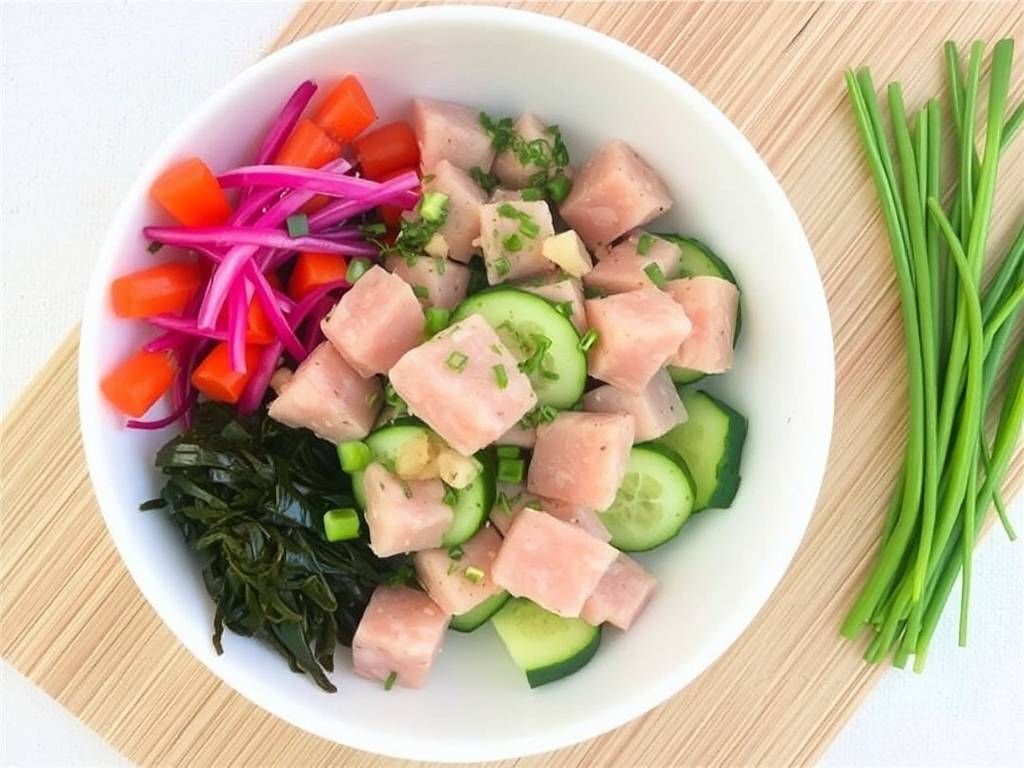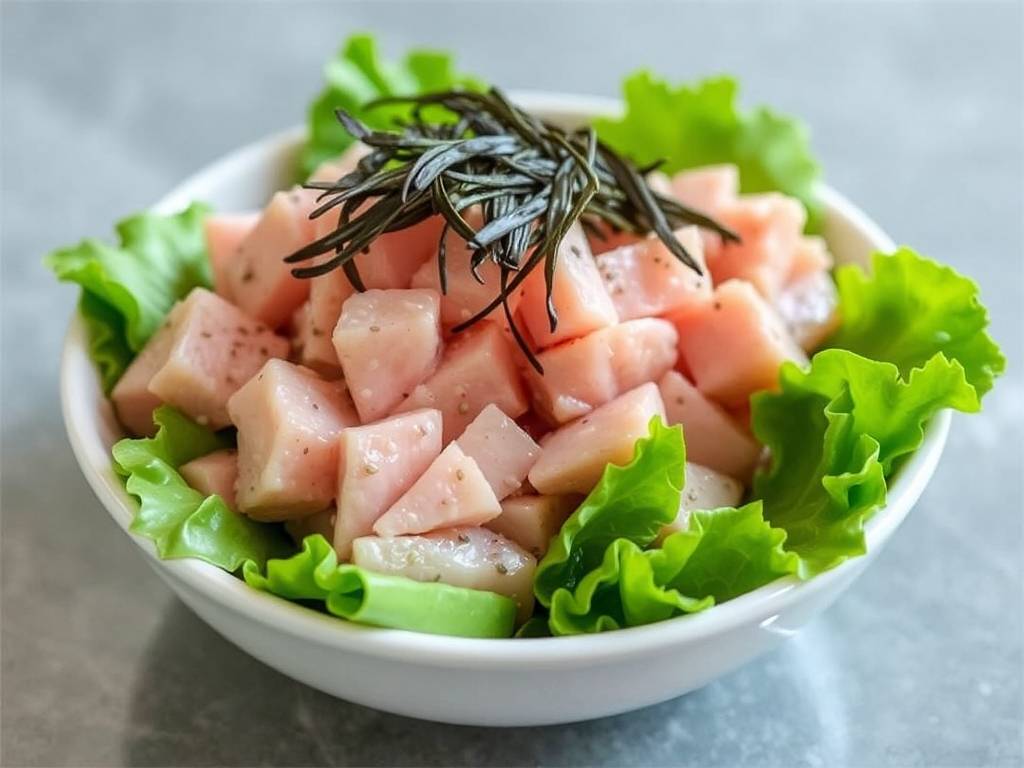The Art of Crafting a Refreshing Tuna Poke with Cucumber and Seaweed
In the vibrant landscape of modern culinary trends, few dishes have captured the global imagination quite like poke. Originating from the shores of Hawaii, this deceptively simple dish of diced, marinated fish has evolved into a canvas for creativity. While many variations exist, from spicy mayo-laden versions to those featuring exotic fruits, there is a profound elegance in returning to its roots with a focus on pristine ingredients. A classic Tuna Poke, enhanced with the cool crunch of cucumber and the umami depth of seaweed, is not merely a meal; it is a celebration of texture, freshness, and balance. Mastering this dish is an accessible art form, one that rewards patience and a respect for quality.
The journey to an exceptional poke bowl begins long before the first ingredient is chopped. It starts with an understanding of the philosophy behind the dish. "Poke" (pronounced poh-kay) means "to slice or cut" in Hawaiian, and this action is the very heart of the recipe. It’s about the integrity of the cut, the freshness of the slice, and the harmony of the components. This is not a dish to be overcooked or overcomplicated. Its power lies in its simplicity.

The Foundation: Selecting the Tuna
The undisputed star of this dish is the tuna. The quality of your fish will make or break your poke. For the best results, you must seek out sushi-grade or sashimi-grade tuna. This designation is not an official USDA grade but rather a term used by reputable fishmongers to indicate that the fish has been handled with extreme care, frozen to a specific temperature to eliminate parasites, and is safe to consume raw.
When selecting your tuna, look for a firm, vibrant piece with a deep, ruby-red color. It should have a clean, oceanic smell, never a fishy one. Avoid any pieces with discoloration or a dull, brownish hue. The two most common varieties are Ahi (Yellowfin) and Bigeye tuna. Ahi is slightly leaner and has a milder flavor, while Bigeye has a richer, fattier texture. Both are excellent choices.
Once you have your perfect piece of tuna, the next critical step is the cut. Using a very sharp knife is non-negotiable. A dull knife will tear the delicate flesh, resulting in a mushy texture. Pat the tuna dry with paper towels, then slice it against the grain into thick steaks, about an inch thick. Then, slice these steaks into long strips, and finally, cube them into generous ¾-inch pieces. This size ensures a satisfying, meaty bite that can stand up to the marinade without falling apart.

The Marinade: A Symphony of Flavors
The marinade, or "poke sauce," is where the magic happens, transforming the raw tuna into a savory, complex delicacy. The goal is to complement, not overpower, the fish. A traditional base consists of soy sauce, sesame oil, and a touch of sweetness.
Start with a base of light soy sauce (or tamari for a gluten-free option). Its saltiness provides the foundational flavor. To this, add a high-quality toasted sesame oil. Its nutty aroma is essential. For sweetness, many recipes call for a bit of mirin (a sweet Japanese rice wine) or a pinch of sugar. However, for a more nuanced flavor, consider using a touch of honey or even a splash of pineapple juice for a tropical hint.
The aromatics are what give the marinade its character. Finely minced Maui or sweet onion adds a gentle pungency. If these are unavailable, a mild red onion or even scallions (green onions) are fine substitutes. Freshly grated ginger and a minced garlic clove add warmth and depth. For heat, a drizzle of sriracha or a sprinkle of crushed red pepper flakes can be added to taste. Finally, a handful of thinly sliced green onions (using both the white and green parts) brings a fresh, allium finish.
Combine all the marinade ingredients in a bowl, whisk to combine, and then gently fold in the cubed tuna. The key word is gently. Coat the tuna evenly, then cover the bowl and let it marinate in the refrigerator. Unlike meat marinades that can take hours, tuna poke needs only 15 to 30 minutes. Any longer, and the acidic and salty components will begin to "cook" the fish, turning it opaque and changing its texture from silky to chalky.
The Supporting Cast: Cucumber and Seaweed
While the tuna marinates, prepare the vegetables that will provide contrast and complexity.
Cucumber offers a crucial element: refreshing crunch. The best variety for poke is the English or Persian cucumber. They have thinner skins, smaller seeds, and a crisper, less watery flesh than standard slicing cucumbers. There’s no need to peel them; simply wash them thoroughly. To prepare, slice the cucumber in half lengthwise and use a small spoon to scrape out the watery seed core. Then, slice the halves into half-moons or small cubes. This step of deseeding is important to prevent your poke from becoming watery.
Seaweed is the ingredient that connects the dish most deeply to its oceanic origins. The most common type used is wakame, a deep green seaweed often found in miso soup. You will typically find it dried. To rehydrate it, place a small handful in a bowl of cold water for about 5-10 minutes. It will expand significantly, so a little goes a long way. Once softened, drain it and squeeze out any excess water. It has a slightly sweet, briny flavor and a wonderfully soft yet slightly chewy texture. For an extra layer of crunch and sea-saltiness, you can also sprinkle in some crumbled roasted seaweed snacks (nori) just before serving.
Assembly and Presentation: Building the Bowl
A poke bowl is a complete meal, and its assembly is part of the pleasure. While the tuna, cucumber, and seaweed are the featured players, they need a base and garnishes to create a harmonious dish.
Start with a base of warm, freshly cooked sushi rice or short-grain brown rice. The slight stickiness and mild sweetness of sushi rice are the perfect foundation. For a lighter option, a bed of mixed greens or quinoa works well.
To assemble, place your chosen base in a wide, shallow bowl. Create a well in the center. Using a slotted spoon to avoid excess marinade making the rice soggy, place the marinated tuna mixture in the center. Artfully arrange the diced cucumber and rehydrated wakame around the tuna.
Now, for the final flourishes. A sprinkle of toasted sesame seeds adds a nutty crunch. Sliced avocado provides a creamy, rich counterpoint to the lean tuna. For a pop of color and a slight bitterness, add some thinly sliced radishes or edamame beans. A final drizzle of spicy mayo (a simple mix of mayonnaise and sriracha) or a squeeze of fresh lime juice can elevate the dish to new heights.
The Final Act: Enjoying Your Creation
The beauty of homemade tuna poke lies in its immediacy and freshness. It is a dish meant to be enjoyed promptly after assembly. Each component should be distinct yet harmonious. Take a bite that includes a little bit of everything: the rich, savory tuna, the cool cucumber, the briny seaweed, the creamy avocado, and the fluffy rice. The experience is a symphony of textures and flavors—salty, sweet, umami, crunchy, and soft—all dancing together.
Making tuna poke with cucumber and seaweed is more than following a recipe; it's an exercise in mindful cooking. It teaches the importance of sourcing quality ingredients, the precision of a good knife cut, and the restraint required to let those ingredients shine. It is a dish that impresses guests but is simple enough for a weeknight dinner. So, find a trusted fishmonger, sharpen your knife, and embark on the rewarding journey of creating your own perfect poke bowl. You’ll discover that the best taste of the ocean might just be the one you craft in your own kitchen.






发表评论